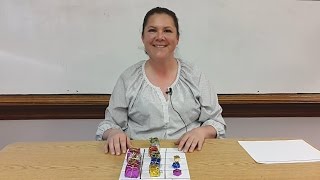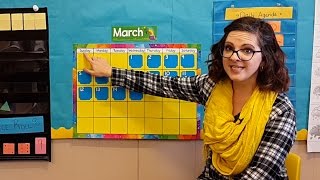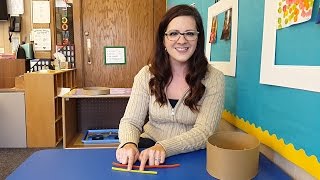Engaging Students in Graphing
Heidi Jo Gallagher | Wichita Collegiate School | Wichita, Kansas
A graphing lesson where the students’ opinions are graphed on a whiteboard. The teacher has two cases filled with different materials and when the cases are shaken they make different sounds. She asks the student which sound they like more and graphs the results in front of them.
Read Transcript
This is how I teach beginning graphing and responding to questions for three and four-year-old’s. So, I like to do, every day, something I call question of the day. And, it’s always related to what they’re learning. So, if we’re learning about the senses I bring in items that they can experience. So, today I have some sounds, I have a soft sound, and I have a loud sound. And what I would do is, I would read my question to the children. I would say, “Do you like the loud sound or soft sound?” And what I would let them do is, I would ask them specifically by name so that they can answer me in a sentence, or with as many words as possible. I would say, “John do you like the loud sound or the soft sound?” And he would tell me, “I like the soft sound.” So, I would write his name in the soft column, John. And I would ask my next student, “Sara, do you like the loud sound or the soft sound?” She would say, “I like the loud sound.” So, I would write her name in the loud column. What I would do is I would ask each student their opinion and then I would fill up my whole graph and I would put their names in each spot until my graph was done, and I talked to each child individually. And we know children all have a different idea on what they like. So, we will fill in the graph for each child and they will feel important, and they will get a chance to use their vocabulary. So, once I have everybody’s name filled in, we will take a minute and we will ask which column has the most, the loud column or the soft column? And we would count first. Let’s count loud, one, two, three, four. Four people like the loud sound. And then we will count the soft, one, two. Two people like the soft sound. And that’s when you can use the words which one has the most? And which one has the least? And the children can notice that the one in the loud column has more than the one in the soft. So, the most is from the loud column. And then the children will say the least is from soft. And this is how I like to teach beginning graphing and how to respond to a question.
Help teachers and children
worldwide by sharing how
you teach.
A global movement of people sharing knowledge and learning from each other, to better educate our children and create hope for the world.
A global movement of people sharing knowledge and learning from each other, to better educate our children and create hope for the world.






